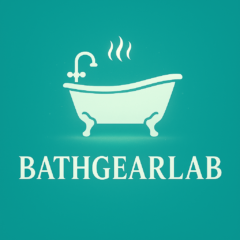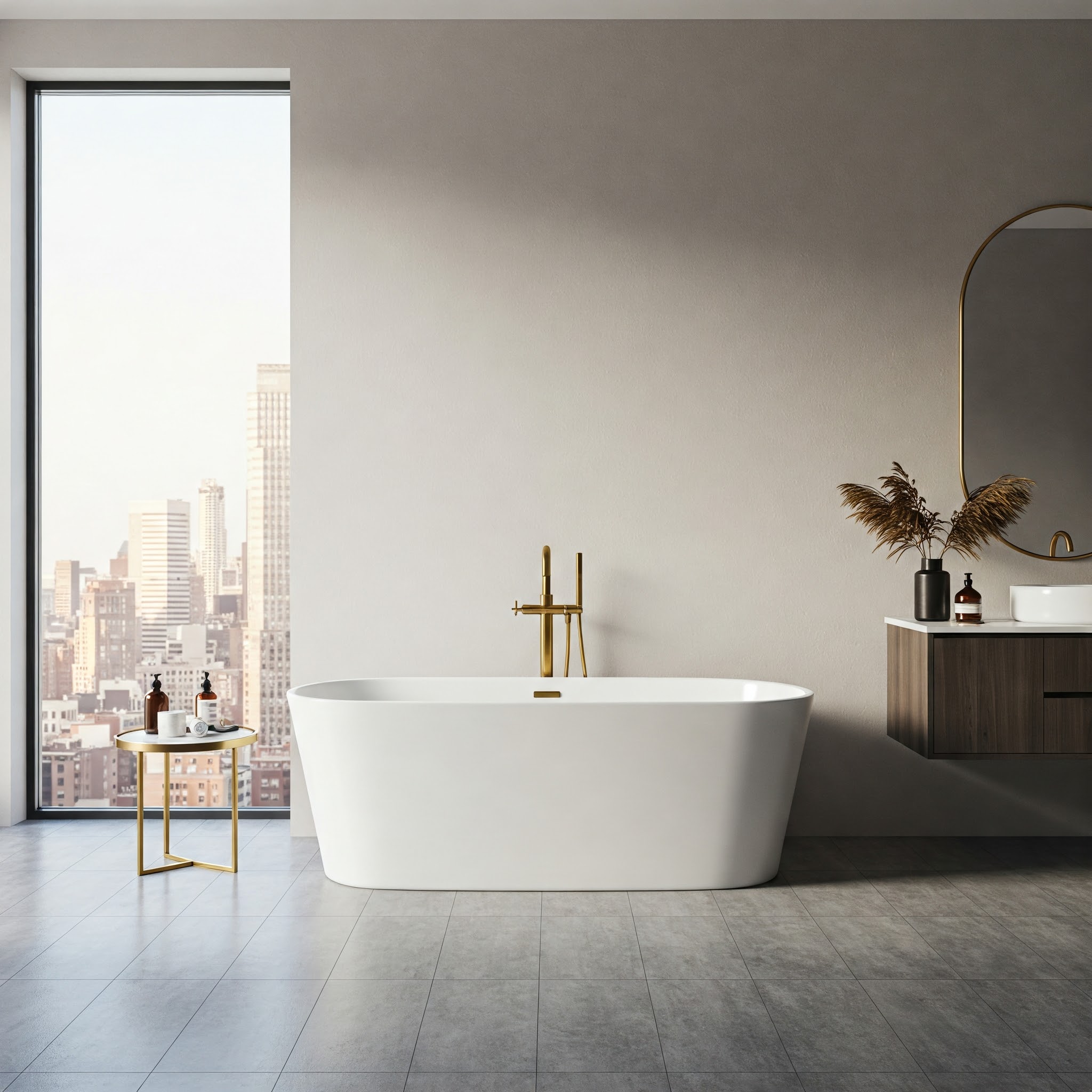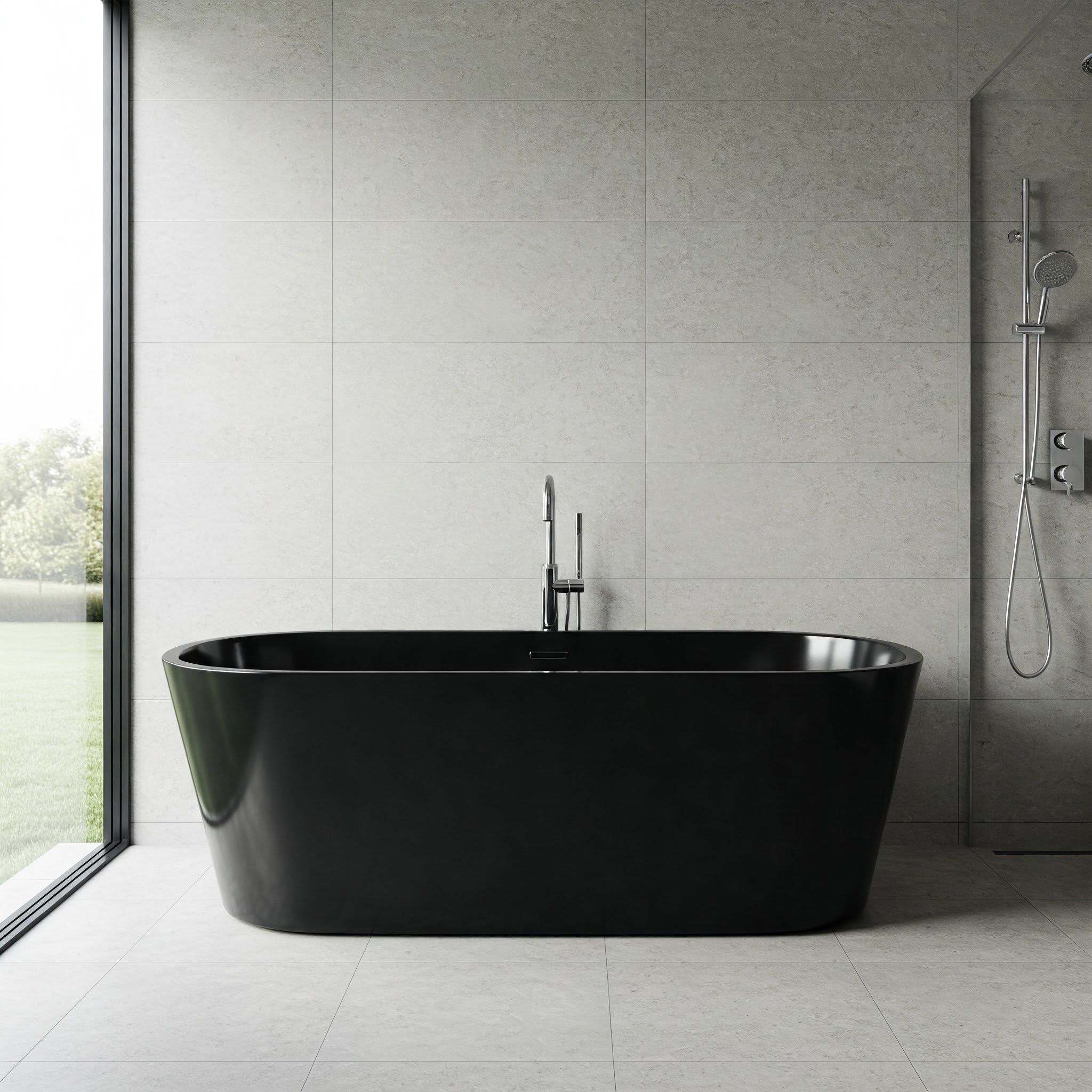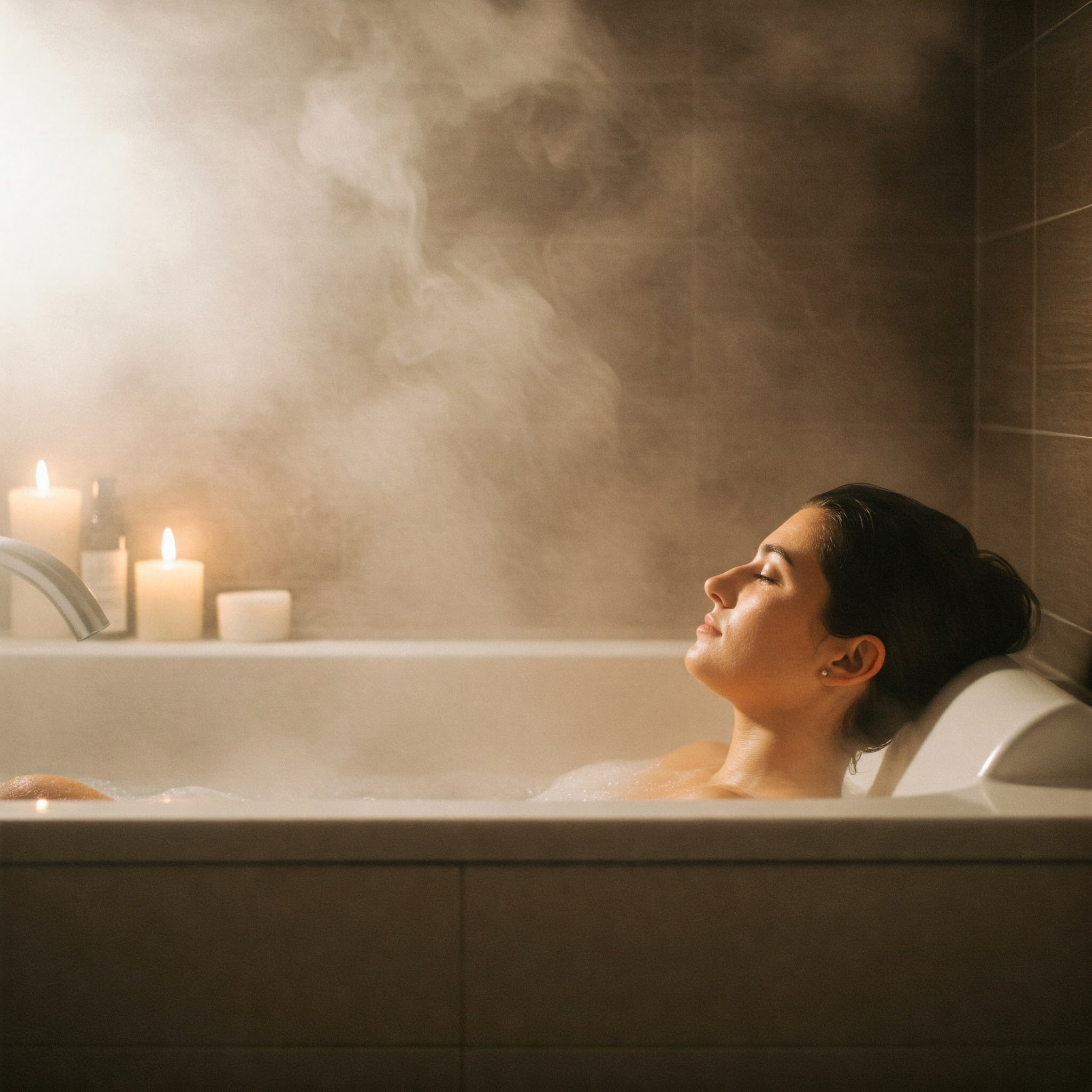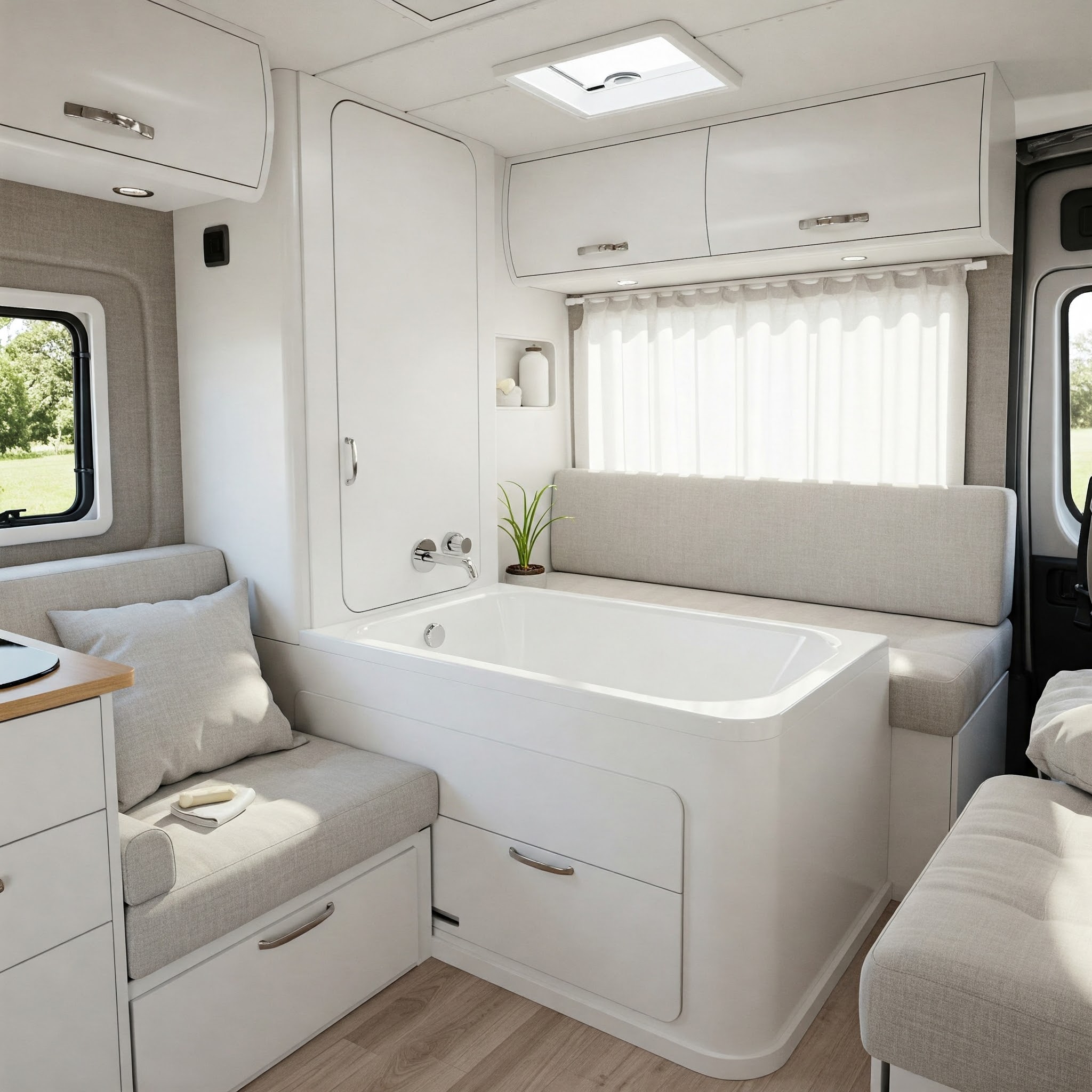Revolutionizing Your Bathroom Space with a Modern Bathtub
The modern bathtub has evolved from a simple utility fixture to the centerpiece of contemporary bathroom design. As homeowners increasingly view their bathrooms as personal sanctuaries rather than merely functional spaces, the demand for innovative, stylish, and technologically advanced bathtubs has surged dramatically. According to a recent survey by the National Kitchen and Bath Association (NKBA), bathroom renovations account for approximately 25% of all home improvement projects in the United States, with modern bathtub installations being a top priority for many homeowners seeking to create spa-like experiences at home.
✨Was this helpful? Spread the word! 🚀
The transformation of the bathroom from a utilitarian space to a personal retreat reflects broader lifestyle changes and wellness trends. Modern bathtubs now incorporate cutting-edge technologies, sustainable materials, and artistic designs that complement today’s architectural aesthetics while providing therapeutic benefits. Whether you’re planning a complete bathroom overhaul or simply looking to upgrade your bathing experience, understanding the latest innovations in modern bathtub design is essential for making informed decisions that balance functionality, style, and comfort.
Understanding the Evolution of Modern Bathtubs
From Functional Fixture to Design Statement
The journey of the bathtub from ancient civilizations to today’s modern bathrooms represents one of the most significant evolutions in home design. Archaeological evidence shows that the earliest bathtubs date back to around 3300 BCE in the Indus Valley Civilization, where public bathhouses featured advanced water systems. The Romans later perfected communal bathing with their elaborate bath complexes, while medieval Europe largely abandoned regular bathing practices until the Renaissance period revived interest in personal hygiene.
The modern bathtub as we recognize it began taking shape in the 19th century with the introduction of cast iron tubs coated with porcelain enamel. These heavy, durable fixtures dominated bathroom design for decades, offering practicality but limited design flexibility. The mid-20th century saw the rise of fiberglass and acrylic materials, which revolutionized manufacturing possibilities and made bathtubs more accessible to average homeowners.
Today’s modern bathtub represents a convergence of historical functionality and contemporary design philosophies. Manufacturers leverage advanced materials, engineering techniques, and aesthetic principles to create fixtures that serve as both practical bathing vessels and artistic statements. According to interior design experts at Architectural Digest, the bathtub has become “the jewelry of the bathroom,” often functioning as the visual anchor around which other design elements revolve.
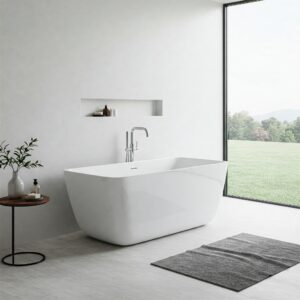
Key Materials Defining Contemporary Bathtub Design
The materials used in modern bathtub construction significantly influence their appearance, performance, and longevity. Understanding these options helps homeowners make informed decisions when selecting the perfect fixture for their space:
Acrylic
Perhaps the most widely used material in contemporary bathtub manufacturing, acrylic offers versatility, lightweight construction, and excellent heat retention. Modern acrylic tubs benefit from technological advancements that have improved their durability and scratch resistance compared to earlier versions. They’re available in virtually any shape or size, making them ideal for custom installations.
Solid Surface Materials
Engineered composite materials like Corian, HI-MACS, and Krion represent the premium tier of modern bathtub construction. These non-porous surfaces combine natural minerals with high-performance polymers to create seamless, hygienic fixtures resistant to staining and bacterial growth. Research from the American Society of Interior Designers indicates that solid surface bathtubs maintain their appearance for 15-20 years with proper care, justifying their higher initial investment.
Natural Stone
For the ultimate luxury statement, natural stone bathtubs carved from marble, granite, onyx, or travertine provide unmatched visual impact. Each stone bathtub is essentially a functional sculpture with unique patterns and colorations. While requiring specialized installation and maintenance, stone bathtubs have extraordinary longevity, potentially lasting generations with proper care.
Cast Iron with Enamel Coating
Traditional cast iron tubs have evolved with modern manufacturing techniques that allow for contemporary designs while maintaining their legendary durability and superior heat retention. Modern enamel coatings resist chipping and discoloration better than their historical counterparts, making these fixtures both practical and visually striking.
Copper and Other Metals
Metal bathtubs, particularly those crafted from copper, brass, or stainless steel, represent a growing trend in luxury bathroom design. Copper tubs develop a beautiful patina over time and offer natural antimicrobial properties. According to research published in Applied and Environmental Microbiology, copper surfaces reduce bacterial contamination by more than 99.9% within two hours of exposure, making them as practical as they are beautiful.
Types of Modern Bathtubs and Their Design Applications
Freestanding Tubs: The Sculptural Centerpiece
Freestanding bathtubs have dominated modern bathroom design trends for the past decade, and their popularity continues to grow. These self-supporting fixtures can be placed virtually anywhere within the bathroom space, creating dramatic focal points and allowing for more creative floor plans. According to interior design statistics from Houzz, freestanding tubs appear in over 65% of master bathroom remodels with budgets exceeding $50,000.
The modern interpretation of freestanding tubs encompasses diverse aesthetic directions:
Contemporary Minimalist
Characterized by clean lines, geometric forms, and monochromatic color schemes, minimalist freestanding tubs embody the “less is more” design philosophy. These tubs often feature sharp angles or perfectly symmetrical oval shapes that create powerful visual statements through their simplicity.
The Woodbridge Acrylic Freestanding Bathtub offers an excellent example of this aesthetic, with its pure white finish and gently sloping interior that balances visual minimalism with ergonomic comfort. Its 67-inch design provides ample bathing space while maintaining clean, uncluttered lines that complement modern bathroom aesthetics.
Sculptural Organic
Drawing inspiration from natural forms, organic freestanding tubs feature flowing lines, asymmetrical shapes, and sometimes unusual materials that evoke connections to the natural world. These bathtubs function as artistic centerpieces that anchor the entire bathroom design.
Neo-Victorian
Merging historical references with contemporary sensibilities, neo-Victorian freestanding tubs typically feature traditional claw feet or pedestals reinterpreted with modern proportions and materials. These fixtures appeal to homeowners seeking design continuity in historic properties or those wanting to introduce classic elements into contemporary spaces.
Built-In and Alcove Tubs: Maximizing Space Efficiency
While freestanding tubs capture significant attention in design publications, built-in and alcove installations remain practical choices for many modern bathrooms, particularly in urban environments where space efficiency is paramount.
Modern built-in tubs have evolved dramatically from their utilitarian predecessors. Today’s designs feature:
- Zero or negative-edge details that create visual continuity with surrounding surfaces
- Integrated storage solutions, including tiled niches and hidden shelving
- Coordinated surrounds that extend the tub material onto adjacent walls
- Chromatherapy lighting systems recessed into the tub deck or surrounding architecture
According to bathroom design experts at This Old House, built-in tubs work particularly well in bathrooms under 100 square feet, where they can maximize functionality without compromising style.
Japanese-Inspired Soaking Tubs: Deep Immersion Experience
Drawing on centuries of bathing tradition, Japanese-inspired soaking tubs (ofuro) have gained tremendous popularity in Western bathroom design. These deep, compact tubs facilitate full-body immersion while seated in an upright position, offering therapeutic benefits in a smaller footprint than conventional horizontal bathing.
Modern interpretations of these tubs typically feature:
- Depths of 22-34 inches (compared to 14-17 inches for standard Western tubs)
- Integrated seating platforms for comfortable upright positioning
- Space-efficient square or circular footprints
- Natural material finishes including hinoki cypress wood, stone, or contemporary composites
Research from the Global Wellness Institute suggests that Japanese bathing practices, which emphasize soaking as a ritualistic relaxation technique rather than primarily for cleansing, align perfectly with contemporary Western interest in mindfulness and stress reduction, explaining the growing popularity of these fixtures.
Walk-In Tubs: Universal Design Excellence
Modern bathroom design increasingly embraces universal design principles that accommodate users of all ages and abilities. Walk-in tubs represent the intersection of accessibility and luxury, providing safe bathing experiences without sacrificing style or comfort.
Contemporary walk-in designs have transcended their clinical origins with features including:
- Seamless door mechanisms with multiple style options
- Hydrotherapy and air jet systems rivaling luxury spas
- Heated seating and backrests
- Fast-fill and quick-drain technology
- Customizable exterior panels that coordinate with any bathroom aesthetic
The aging-in-place movement has elevated walk-in tubs from specialty items to mainstream design choices. According to data from the American Association of Retired Persons (AARP), over 87% of adults aged 65+ express desire to remain in their current homes as they age, driving demand for bathroom fixtures that combine safety with sophisticated design.
✨ Transform Your Bathroom Today with the Perfect Modern Bathtub! 🛁
➡ Don’t wait to create the bathroom of your dreams! Explore our carefully selected modern bathtub recommendations to find the perfect match for your space, style, and budget. Remember, a quality bathtub is an investment in your home’s value and your personal wellbeing for years to come. Click any highlighted product to check current pricing and availability!
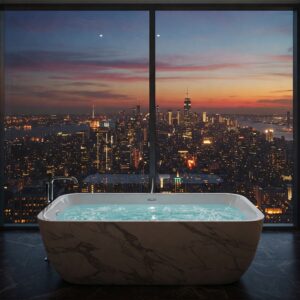
Technology Integration in Modern Bathtubs
Digital Controls and Smart Home Integration
The modern bathtub increasingly functions as a technological hub within the connected home. Digital interfaces have replaced conventional faucets and drain controls in premium models, offering unprecedented customization of the bathing experience. Interactive touchscreens, voice activation, and smartphone integration allow users to control water temperature, flow rate, and fill level with precision.
The Kohler DTV+ Digital Showering System exemplifies this trend, allowing bathers to create personalized presets for water temperature, chromatherapy lighting sequences, and even music playlists that can be activated with a single command. Similarly, the TOTO NEOREST Flotation Tub utilizes digital controls to maintain precise water temperature within 0.5 degrees Fahrenheit for extended periods, ensuring consistent comfort throughout longer soaking sessions.
Smart home integration extends the functionality of these systems beyond the bathroom itself. Modern bathtubs can communicate with whole-house automation systems to coordinate water heating, ambient lighting, and even room temperature in preparation for bathing. According to research from the Connected Devices Federation, bathroom fixtures rank among the fastest-growing categories in smart home adoption, with integrated bathtubs showing 32% year-over-year growth.
Hydrotherapy and Wellness Technologies
Modern bathtub design increasingly focuses on therapeutic benefits beyond basic relaxation. Advanced hydrotherapy systems incorporate precisely positioned jets that target specific muscle groups for maximum relief of tension and discomfort. Unlike older whirlpool designs with their sometimes harsh water action, modern systems offer variable intensity levels and customizable jet configurations.
Air-based hydrotherapy represents another significant advancement, using thousands of tiny bubbles to create gentle, full-body stimulation. These systems, sometimes called effervescent baths, provide therapeutic benefits without the more intense water movement of traditional jetted tubs.
Some cutting-edge modern bathtubs incorporate empirically validated wellness technologies:
- Chromatherapy: Integrated LED lighting systems that cycle through specific color sequences, potentially influencing mood and energy levels
- Aromatherapy: Built-in diffusion systems that integrate essential oils directly into steam or water
- Sound therapy: Resonant surfaces that transmit sound vibrations through the bathwater, creating immersive audio experiences
Research published in the Journal of Alternative and Complementary Medicine suggests that multisensory bathing experiences combining these elements may enhance stress reduction compared to standard bathing, potentially offering measurable health benefits.
Water Conservation Features
Modern bathtub design increasingly balances luxury with environmental responsibility. Water-conscious features have become standard in premium fixtures, reflecting both consumer demand and regulatory requirements in many regions.
Innovative conservation technologies include:
- Precision-fill systems that automatically stop water flow at predetermined levels
- Insulated shells and basins that maintain water temperature longer, reducing the need to add hot water during extended soaks
- Greywater-compatible designs that allow bathwater to be captured and repurposed for irrigation
- Air-induction jets that create substantial hydrotherapy action with reduced water volume
According to the Environmental Protection Agency (EPA), bathrooms account for more than half of all residential indoor water usage in the United States. Modern bathtubs with efficient design can reduce this consumption by 20-30% without compromising the bathing experience.
Top Modern Bathtub Designs for Different Bathroom Styles
Minimalist Modern: Clean Lines and Visual Simplicity
Minimalist bathroom aesthetics pair perfectly with modern bathtubs that emphasize clean geometry and uncluttered design. These spaces typically feature monochromatic color schemes, limited material palettes, and architectural simplicity that allows each element to make a clear visual statement.
Ideal modern bathtub choices for minimalist bathrooms include:
Rectangular Freestanding Tubs with Zero-Radius Corners
These geometric designs feature perfectly straight sides and sharp 90-degree corners that create bold, architectural statements. The Vanity Art Freestanding Acrylic Bathtub represents this category well, with its pure rectangular form and contemporary matte white finish that complements minimalist design principles perfectly. With its 70-inch length and ergonomic interior, this modern bathtub balances visual simplicity with practical comfort.
Integrated Solid-Surface Designs
Bathtubs crafted from continuous solid-surface materials like Corian create seamless installations where the tub appears to emerge directly from the floor or surrounding surfaces. These installations eliminate visual transitions between different bathroom elements, reinforcing the clean, uncluttered aesthetic central to minimalist design.
Industrial Modern: Raw Materials and Structural Honesty
Industrial bathroom design celebrates manufacturing processes and structural elements, often incorporating exposed materials, mechanical components, and utilitarian fixtures recontextualized as design features. This aesthetic pairs well with modern bathtubs that highlight their construction materials and methods.
Complementary modern bathtub options include:
Metal Vessel Tubs
Copper, brass, stainless steel, and even cast iron bathtubs with minimal finishing work showcase the inherent properties of these materials. The natural patination process of copper and brass creates evolving aesthetic interest that aligns perfectly with industrial design principles.
Concrete Soaking Tubs
Modern concrete formulation techniques have revolutionized this material’s application in bathroom fixtures. Contemporary concrete bathtubs feature thinner walls, lighter weight, and sealed surfaces that maintain the material’s distinctive appearance while providing practical functionality.
Organic Modern: Natural Inspirations and Flowing Forms
The organic modern aesthetic blends contemporary design principles with natural references, creating spaces that feel simultaneously current and connected to the natural world. These bathrooms typically feature curved architectural elements, natural material palettes, and biophilic design elements.
Modern bathtubs that enhance organic bathroom designs include:
Stone-Inspired Composite Tubs
Engineered materials that mimic natural stone offer the organic visual qualities of marble or granite with improved durability and maintenance requirements. These modern bathtubs often feature softly curved, asymmetrical forms that reference river-worn stones or other natural shapes.
The Empava 67″ Acrylic Freestanding Bathtub embodies this organic modern approach with its ergonomic, curved design that cradles the body naturally. Its smooth, stone-like composite construction provides excellent heat retention while its flowing form creates a sculptural focal point in organic modern bathrooms.
Wood and Wood-Composite Vessels
Drawing on traditional Japanese ofuro designs, contemporary wooden bathtubs incorporate modern manufacturing techniques and protective finishes that enhance durability while maintaining the material’s natural beauty and tactile warmth.
Transitional: Bridging Traditional and Contemporary Elements
Transitional bathroom design balances traditional architectural elements with contemporary fixtures and finishes, creating timeless spaces that reference historical design without feeling dated. This popular aesthetic allows homeowners to update their spaces incrementally rather than committing to complete stylistic transformations.
Modern bathtubs that excel in transitional bathrooms include:
Updated Clawfoot Designs
Contemporary interpretations of Victorian clawfoot tubs feature simplified bases, monochromatic color schemes, and streamlined proportions that reference historical precedents while harmonizing with modern bathrooms.
The Kingston Brass Aqua Eden Clawfoot Bathtub exemplifies this transitional approach, pairing a traditional clawfoot design with contemporary proportions and simplified detailing. Its acrylic construction offers modern performance benefits while its silhouette provides a comforting connection to bathroom design history.
Pedestal Soaking Tubs
Modern pedestal tubs supported by simplified bases create elegant transitional statements that work equally well in traditional and contemporary settings. These designs often feature subtle curves and comfortable proportions that prioritize bathing comfort.
✨ Transform Your Bathroom Today with the Perfect Modern Bathtub! 🛁
➡ Don’t wait to create the bathroom of your dreams! Explore our carefully selected modern bathtub recommendations to find the perfect match for your space, style, and budget. Remember, a quality bathtub is an investment in your home’s value and your personal wellbeing for years to come. Click any highlighted product to check current pricing and availability!
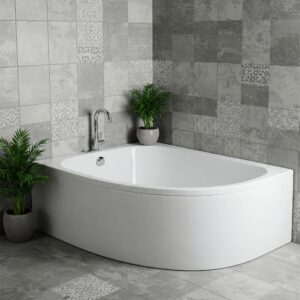
Installation Considerations for Modern Bathtubs
Structural Requirements and Floor Reinforcement
The installation of a modern bathtub, particularly larger freestanding models, requires careful structural planning. Standard residential floors are typically designed to support approximately 40 pounds per square foot, while a filled bathtub can easily exceed 100 pounds per square foot. According to building science experts at Fine Homebuilding, inadequate structural support represents the most common critical error in bathtub installations.
Key structural considerations include:
- Floor joist direction, spacing, and dimensions
- Subfloor thickness and material
- Proximity to load-bearing walls
- Total filled weight of the specific bathtub model
- Concentrated load points (particularly for claw-foot or pedestal designs)
For renovations involving heavier stone, cast iron, or concrete modern bathtubs, professional structural assessment is essential. Reinforcement options might include sister joists, additional support beams, or comprehensive floor system upgrades depending on the existing structure.
The American Standard Estate Freestanding Soaking Bathtub offers a practical solution for homeowners concerned about structural limitations. At just 115 pounds empty, this acrylic modern bathtub provides luxurious soaking depth without excessive weight, making it suitable for installation in most residential bathrooms without extensive structural modifications.
Plumbing Configurations and Water Delivery Options
Modern bathtub installations offer diverse plumbing approaches beyond traditional wall-mounted fixtures. Contemporary options include:
Floor-Mounted Fillers
Freestanding tub fillers anchored to the bathroom floor provide dramatic visual impact while allowing maximum flexibility in tub placement. These fixtures require careful planning during the rough-in plumbing phase, with water lines run through the subfloor to the precise emergence point.
Deck-Mounted Systems
For built-in modern bathtubs, deck-mounted faucets, hand showers, and controls can be installed directly into the surrounding tub deck or adjacent surfaces. These installations create clean, integrated appearances but require accessible service points for future maintenance.
Wall-Mounted Waterfall Features
Specialized wall spouts that create sheet-like water flow offer both visual drama and practical benefits, including reduced splashing and aeration noise. These fixtures typically require higher water pressure and specialized rough-in configurations to function properly.
According to master plumbers interviewed by Consumer Reports, the installation complexity and cost for specialized modern bathtub fillers can equal or exceed the cost of the tub itself in some cases, making early planning and budgeting critical.
Modern Drainage Solutions
Contemporary bathtub drainage systems prioritize both performance and aesthetics, with options including:
Linear Drains
These elongated drain designs, originally developed for curbless showers, have been adapted for modern bathtubs to provide more efficient drainage while creating cleaner visual lines. Linear systems often feature customizable cover plates that can match surrounding materials for nearly invisible integration.
Pop-Up and Push-Button Mechanisms
Modern alternatives to traditional trip-lever waste assemblies, these systems operate with simple push action and create uncluttered tub profiles. Many incorporate overflow protection without visible cover plates, maintaining clean design aesthetics.
Specialized Overflow Systems
Zero-edge and infinity bathtubs employ sophisticated drainage engineering that allows water to flow over interior edges into concealed channels. These designs create dramatic visual effects while maintaining safe water containment.
Maintenance and Care for Modern Bathtubs
Material-Specific Cleaning Protocols
Different modern bathtub materials require specific maintenance approaches to maintain their appearance and performance over time:
Acrylic and Fiberglass
These synthetic surfaces benefit from non-abrasive cleaning methods using soft cloths and mild cleansers. According to cleaning experts at Real Simple, a simple mixture of dish soap and warm water effectively maintains most acrylic tubs without risking surface damage. Commercial cleaners containing acetone, ammonia, or harsh abrasives should be strictly avoided as they can permanently damage these surfaces.
Natural Stone
Stone bathtubs require specialized care to maintain their finish and prevent staining or etching. Regular application of appropriate stone sealants (typically every 6-12 months) provides essential protection against water penetration and chemical damage. Cleaning should be performed with pH-neutral products specifically formulated for natural stone.
Enameled Cast Iron
These durable surfaces tolerate more robust cleaning methods but still benefit from preventative care. The enamel coating, while highly resistant to damage, can chip with heavy impact. Cleaners containing bleach should be used sparingly as they can gradually degrade the glossy finish with extended exposure.
Copper and Metal
Metal bathtubs develop unique patinas through natural oxidation processes. While many homeowners appreciate this evolving aesthetic, specific care practices can either encourage or minimize these changes. According to metallurgical experts, maintaining consistent waxing schedules (typically every 4-6 weeks) helps protect the finished surface regardless of whether the homeowner prefers to maintain the original shine or develop a patina.
Water Quality Considerations
The mineral content of household water significantly impacts modern bathtub maintenance requirements. Hard water containing high concentrations of calcium and magnesium can create stubborn deposits that become increasingly difficult to remove over time.
Preventative strategies include:
- Installation of whole-house water softening systems
- Regular application of mineral-specific cleaning solutions
- Post-bathing wipe-downs to remove residual water from surfaces
- Periodic deep cleaning with appropriate descaling products
Research from the Water Quality Association indicates that homes with water hardness exceeding 7 grains per gallon may require specialized maintenance protocols to maintain optimal bathtub appearance, particularly for dark-colored or matte-finished fixtures where mineral deposits are more visible.
Professional Restoration Options
Even with diligent maintenance, modern bathtubs may eventually develop wear patterns, minor damage, or persistent staining that requires professional intervention. Contemporary restoration techniques offer alternatives to complete replacement:
Surface Refinishing
Professional refinishing (sometimes called reglazing) applies new surface coatings to existing bathtubs. Modern polymer-based systems provide durability significantly improved from earlier refinishing methods, with quality applications lasting 10-15 years with proper care.
Liner Installation
Custom-manufactured acrylic liners can be installed over existing fixtures, creating new surfaces while retaining the original tub structure. This approach works particularly well for built-in installations where removal would require extensive demolition.
Structural Repairs
Specialized techniques including fiberglass reinforcement, crack welding, and composite patching can address structural issues in existing bathtubs. These repairs, when properly executed, restore both aesthetic appearance and functional integrity.
According to remodeling cost data compiled by Remodeling Magazine, professional restoration typically represents 15-30% of replacement cost, making it an economically attractive option for many homeowners.
Comparison of Leading Modern Bathtub Options
| Model | Style | Material | Special Features | Price Range | Weight | Size |
|---|---|---|---|---|---|---|
| Woodbridge Acrylic Freestanding | Contemporary | Acrylic | Double-walled insulation, Overflow system | $$$$ | 105 lbs | 67″ × 31.5″ × 23″ |
| Empava 67″ Freestanding | Organic Modern | Acrylic | Ergonomic design, Quick-drain | $$$ | 99 lbs | 67″ × 31″ × 23″ |
| Kingston Brass Aqua Eden | Transitional | Acrylic | Classic clawfoot design, Modern materials | $$$ | 93 lbs | 66″ × 30″ × 30″ |
| American Standard Estate | Contemporary | Acrylic | Pre-leveled base, Deep soaking | $$$$ | 115 lbs | 66″ × 36″ × 22″ |
| Vanity Art Freestanding | Minimalist | Acrylic | Zero-radius corners, Integrated overflow | $$$ | 88 lbs | 70″ × 31″ × 22.5″ |
💬 Just one click – help others make better buying decisions too!😊
✨ Transform Your Bathroom Today with the Perfect Modern Bathtub! 🛁
➡ Don’t wait to create the bathroom of your dreams! Explore our carefully selected modern bathtub recommendations to find the perfect match for your space, style, and budget. Remember, a quality bathtub is an investment in your home’s value and your personal wellbeing for years to come. Click any highlighted product to check current pricing and availability!
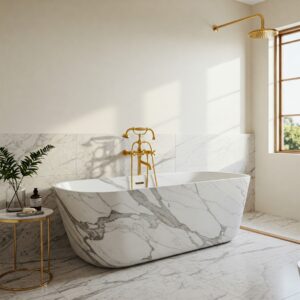
Design Trends Shaping the Future of Modern Bathtubs
Sustainable Materials and Manufacturing
Environmental consciousness increasingly influences modern bathtub design and production. Manufacturers are exploring innovative sustainable materials with reduced ecological footprints compared to traditional options:
Bio-Based Composites
Emerging bio-composite materials incorporate significant percentages of renewable resources, including agricultural byproducts and rapidly renewable plant fibers, bound with eco-friendly resins. These materials offer durability comparable to conventional synthetics while reducing petroleum dependence.
Recycled Content Integration
Advanced manufacturing techniques now allow incorporation of post-consumer and post-industrial recycled content into high-performance bathtub materials without compromising aesthetic quality or structural integrity. According to sustainability researchers at Green Builder Media, bathtubs incorporating 15-30% recycled content now perform comparably to virgin material products in durability testing.
Water and Energy Conservation
Beyond material considerations, modern bathtub design increasingly focuses on operational sustainability. Deep soaking tubs with smaller footprints reduce water consumption compared to traditional models, while superior insulation minimizes heat loss during use, reducing energy requirements for water heating.
Multifunctional Bathing Spaces
Contemporary bathroom design increasingly blurs traditional boundaries between bathing fixtures, creating multifunctional spaces that adapt to diverse user preferences and space limitations:
Shower-Bath Combinations
Moving far beyond utilitarian shower-tub combinations of previous decades, modern integrated designs feature luxurious soaking tubs within sophisticated shower environments. These installations often incorporate multiple water delivery systems, integrated seating, and specialized lighting to create comprehensive bathing experiences.
Wet Room Configurations
The wet room concept eliminates conventional barriers between bathroom zones, creating fully waterproofed environments where shower and bathing areas flow together seamlessly. Modern bathtubs designed specifically for wet room installation feature simplified plumbing connections and drainage systems that integrate with whole-room waterproofing.
Indoor-Outdoor Connections
In suitable climates, modern bathtub installations increasingly create connections to outdoor spaces through strategic placement adjacent to windows, courtyards, or private gardens. Materials selected for these applications provide UV resistance and thermal stability for fixtures exposed to natural elements.
Personalization and Custom Design
Mass customization has revolutionized modern bathtub manufacturing, allowing homeowners to create semi-custom or fully bespoke fixtures that precisely match their preferences and requirements:
Color and Finish Expansion
While white remains the dominant color for bathroom fixtures, modern manufacturing techniques have expanded available options dramatically. Contemporary bathtubs are available in hundreds of colors, metallics, and specialty finishes that coordinate with broader interior design schemes.
Size and Proportion Customization
Digital manufacturing systems allow cost-effective production of non-standard dimensions, helping homeowners optimize their bathtubs for specific spaces or body types. According to ergonomic research cited by Kitchen & Bath Design News, personalized tub dimensions can significantly enhance comfort for users whose body proportions differ substantially from statistical averages.
Integrated Technology Packages
Modular technology integration allows homeowners to select specific feature combinations matching their priorities and preferences. From simple chromatherapy lighting to comprehensive hydrotherapy systems, these customization options create personalized bathing experiences tailored to individual needs.
Making the Right Modern Bathtub Selection: Practical Considerations
Bathroom Size and Layout Optimization
The physical dimensions of your bathroom fundamentally influence appropriate modern bathtub selections. Spatial planning should consider:
Clearance Requirements
Building codes typically require minimum clearances around bathroom fixtures for safety and functionality. Most jurisdictions specify at least 21 inches of clear floor space adjacent to bathtubs, with additional requirements for electrical fixtures and other bathroom elements.
Visual Proportions
Beyond basic functionality, the visual relationship between the bathtub and overall room dimensions significantly impacts aesthetic success. Design experts recommend that freestanding tubs occupy no more than 30% of visible floor space in most bathrooms to maintain appropriate visual balance.
Access Considerations
Installation planning should account for practical concerns including:
- Door swing paths that don’t conflict with tub placement
- Comfortable entry and exit points appropriate for all users
- Adequate space for cleaning around and behind fixtures
- Clear paths for moving the tub into the bathroom during installation
For smaller bathrooms under 100 square feet, compact modern bathtubs like the Eago 59″ Freestanding Acrylic Tub offer excellent alternatives to standard-size fixtures. At just under five feet long, these scaled-down designs provide full bathing functionality while preserving precious floor space for other bathroom necessities.
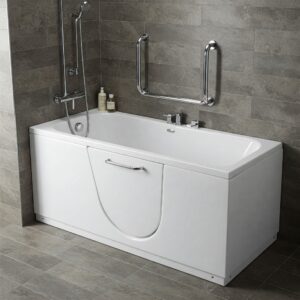
Budget Planning Beyond Purchase Price
The total cost of a modern bathtub installation extends significantly beyond the fixture’s purchase price. Comprehensive budget planning should include:
Installation Complexity
Professional installation costs typically range from 20-100% of the tub purchase price, varying dramatically based on:
- Required structural modifications
- Plumbing reconfiguration complexity
- Access challenges in existing bathrooms
- Specialized material handling requirements (particularly for heavier fixtures)
Ongoing Operational Costs
Different bathtub designs create varying long-term cost implications:
- Water consumption per typical use
- Energy required to heat and maintain water temperature
- Specialized cleaning products for particular materials
- Maintenance requirements including professional servicing
Return on Investment Considerations
According to real estate analysis from Remodeling Magazine’s Cost vs. Value Report, bathroom renovations featuring premium fixtures like modern bathtubs typically recover 60-70% of their cost at resale, with higher returns in luxury housing markets and for tastefully executed projects using quality materials.
Lifestyle Alignment and Usage Patterns
The ideal modern bathtub varies significantly based on individual and family bathing preferences and habits:
Frequency of Use
For daily bathers, features like quick-filling capabilities, excellent heat retention, and simplified cleaning become particularly important. The Woodbridge Acrylic Freestanding Bathtub excels in these practical aspects with its double-walled insulation that maintains water temperature up to 60% longer than single-walled alternatives, making it ideal for regular use.
Therapeutic Priorities
Users seeking specific therapeutic benefits should prioritize tubs with features aligned with their needs:
- Chronic muscle tension may benefit from targeted hydrotherapy jets
- Joint pain often responds well to deep soaking configurations
- Stress reduction might prioritize multisensory features including chromatherapy
Family Considerations
Households with children may require different features than adults-only homes:
- Slip-resistant surfaces enhance safety for all users
- Deeper tubs with integrated seating accommodate various body sizes
- Easy-clean materials and minimal crevices simplify maintenance with heavy use
How to Maintain Your Modern Bathtub’s Beauty and Functionality
Daily Care Routines That Prevent Long-Term Issues
Simple daily habits significantly extend your modern bathtub’s aesthetic and functional lifespan:
Post-Use Rinse and Wipe
Quickly rinsing surfaces with clean water after bathing removes residual soap, oils, and body products before they can form stubborn deposits. Following with a quick towel dry—particularly in hard water areas—prevents mineral spotting and reduces cleaning frequency.
Adequate Ventilation
Proper bathroom ventilation reduces humidity levels that can promote mold growth and accelerate deterioration of certain materials. Exhaust fans should be run during and for 20-30 minutes after bathing to effectively remove excess moisture.
Preventative Product Selection
Choosing body and cleaning products compatible with your specific bathtub material prevents inadvertent damage:
- Oil-based bath products may stain certain porous surfaces
- Highly colored bath bombs can temporarily discolor some materials
- Abrasive cleansers damage most modern finishes
Seasonal Deep Cleaning Procedures
Beyond daily maintenance, periodic deep cleaning prevents accumulation of stubborn deposits and maintains optimal appearance:
Acrylic and Fiberglass
Quarterly cleaning with specialized acrylic cleaners removes accumulated residues without damaging surfaces. For stubborn stains, a paste of baking soda and water applied with a soft cloth can safely restore the surface without scratching.
Natural Stone
Bi-annual professional-grade sealing maintains stone’s natural resistance to water and staining. Deep cleaning should only use products specifically formulated for your particular stone type, as acidic cleaners appropriate for some stones can permanently damage others.
Metal Surfaces
Seasonal polishing with appropriate metal-specific products maintains desired finish levels whether you prefer bright polish or developing patina. Copper and brass fixtures benefit from specialized wax applications that protect while allowing controlled oxidation if desired.
Professional Maintenance Schedule
Establishing a relationship with qualified service professionals ensures proper care for premium modern bathtubs:
Annual Inspection
Professional evaluation of seals, drains, and mechanical components identifies developing issues before they cause significant damage. This preventative approach typically costs 75-90% less than emergency repairs for water damage from failed components.
Refinishing Assessment
Professional surface evaluation every 3-5 years determines whether refinishing would benefit older fixtures showing wear patterns, minor damage, or persistent staining. Early intervention significantly reduces restoration costs and extends fixture lifespan.
System Servicing
Jetted tubs and those with integrated technology benefit from regular professional servicing of pumps, heaters, and electronic components according to manufacturer recommendations, typically every 12-24 months depending on usage patterns.
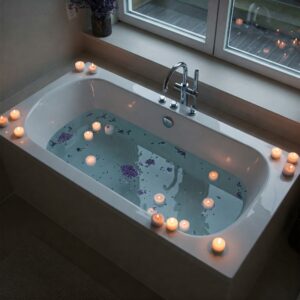
Integrating Your Modern Bathtub into a Cohesive Bathroom Design
Coordinating Materials and Finishes
Creating visual continuity between your modern bathtub and surrounding elements enhances overall design success:
Color Harmony
While exact color matching across different materials can prove challenging, successful designs typically maintain coordinated color temperature (warm vs. cool tones) throughout the space. According to color theory experts at Architectural Digest, limiting the bathroom palette to 2-3 dominant colors creates visual cohesion even when mixing diverse materials and textures.
Material Transitions
Thoughtful transitions between different bathroom materials create sophisticated design integration:
- Tile selections that complement bathtub finishes
- Countertop materials that visually connect to tub surfaces
- Flooring that provides appropriate contrast or continuity
Hardware Coordination
Plumbing fixtures, cabinet hardware, and accessory finishes should maintain consistent metal tones throughout the space. The current design trend favors mixing metal finishes (like matte black with brushed brass) but requires careful balancing of warm and cool tones for successful execution.
Lighting Design for Optimal Bathing Experience
Strategic lighting transforms both the functionality and atmosphere of modern bathtub installations:
Task Lighting
Practical illumination ensures safety and functionality during routine bathing activities. Recessed waterproof fixtures directly above the tub provide even, shadow-free lighting without creating harsh glare on wet surfaces.
Ambient Effects
Mood-enhancing lighting transforms evening bathing into immersive experiences. Options include:
- Cove lighting that washes walls with soft, indirect illumination
- Under-tub lighting creating floating effects for freestanding installations
- Programmable LED systems with adjustable color temperatures
Natural Light Integration
Daylight offers unmatched color rendering and psychological benefits when privacy concerns can be addressed through:
- Frosted or textured glass windows
- Strategic placement of privacy landscaping
- Advanced glazing technologies like switchable privacy glass
Storage and Accessibility Planning
Practical considerations enhance the daily usability of modern bathtub environments:
Bathing Essentials Access
Convenient storage for frequently used items improves the bathing experience:
- Built-in niches for soaps and shower products
- Tub-side tables or surfaces for books and beverages
- Towel warming drawers or heated racks within reach of the tub
Universal Design Integration
Thoughtful accessibility features benefit users of all abilities:
- Grab bars integrated as design elements rather than institutional additions
- Non-slip flooring surrounding the bathing area
- Transfer benches or seating that complement overall aesthetic
Enhancing Your Modern Bathtub Experience: Premium Products
The Bath Haven Bath Pillow with 4D Air Mesh Technology provides exceptional neck and shoulder support during extended soaking sessions. Its quick-drying, mildew-resistant materials ensure lasting comfort and hygiene while the secure suction cups keep it perfectly positioned throughout your bath. This ergonomically designed pillow works beautifully with virtually any modern bathtub style, including both curved and straight-backed designs.
For the ultimate in relaxation, the GORILLA GRIP Luxury Bath Pillow creates spa-like comfort with its orthopedic design and waterproof construction. Its seven strong suction cups ensure stability during use while the breathable mesh allows quick drying between baths. Compatible with jetted tubs, freestanding designs, and traditional installations, this premium accessory enhances any modern bathtub experience.
Create immersive bathing experiences with the Homasy Essential Oil Bath Bombs Gift Set. These handcrafted, therapeutic-grade bath bombs combine natural essential oils, Epsom salt, and skin-nourishing ingredients to transform ordinary baths into aromatherapy sessions. Each bomb creates vibrant colors without staining your modern bathtub surfaces, making them safe for all tub materials including sensitive acrylic and solid surface options.
Conclusion: Creating Your Personal Bathing Sanctuary
The modern bathtub represents far more than a simple utility fixture—it serves as the centerpiece of our most intimate personal spaces and a daily opportunity for rejuvenation. By understanding the diverse options in materials, designs, technologies, and installation approaches, homeowners can make informed decisions that balance aesthetic preferences with practical considerations.
Whether you’re drawn to the sculptural presence of a freestanding soaking tub, the space-efficient functionality of a Japanese-inspired design, or the therapeutic benefits of an advanced hydrotherapy system, today’s modern bathtub market offers unprecedented choice. The key to satisfaction lies in aligning your selection with your specific priorities, space constraints, and lifestyle patterns.
As bathroom design continues evolving toward more personalized, wellness-focused environments, the modern bathtub stands at the intersection of technological innovation and timeless human desire for comfort and relaxation. By investing thoughtfully in this essential element, you create not just a place to bathe, but a personal sanctuary for daily renewal.
✨ Transform Your Bathroom Today with the Perfect Modern Bathtub! 🛁
➡ Don’t wait to create the bathroom of your dreams! Explore our carefully selected modern bathtub recommendations to find the perfect match for your space, style, and budget. Remember, a quality bathtub is an investment in your home’s value and your personal wellbeing for years to come. Click any highlighted product to check current pricing and availability!
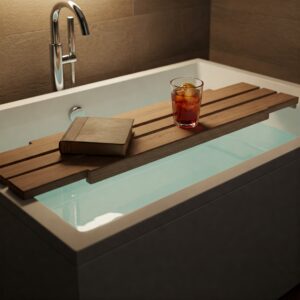
More FAQs
❓ What is the average cost of installing a modern bathtub?
✅ Between $1,500-$7,500 for a complete installation... This includes the tub ($800-$4,000), professional installation ($500-$2,000), plumbing modifications ($200-$800), and any necessary structural reinforcement. Luxury models with advanced features can exceed $10,000...
❓ How long does a modern bathtub installation typically take?
✅ Approximately 1-3 days for standard installations... Simple replacements can be completed in a single day, while custom installations requiring structural modifications or specialized plumbing may take up to a week. Planning for some bathroom downtime is recommended...
❓ Can I install a modern bathtub in a small bathroom?
✅ Yes, with appropriate size selection and planning... Japanese soaking tubs, compact freestanding designs, and corner installations work well in bathrooms as small as 40 square feet. Focus on models under 60 inches in length with proportional width and depth...
❓ What modern bathtub material is best for heat retention?
✅ Cast iron and solid surface materials offer superior heat retention... Double-walled acrylic tubs provide excellent insulation at a lower weight. Stone tubs heat slowly but maintain temperature longest. For maximum performance, look for models with integrated insulation systems...
❓ How do I know if my floor can support a modern freestanding bathtub?
✅ Most standard wood floor systems can support acrylic and fiberglass tubs... Heavier materials like stone, concrete, or cast iron often require reinforcement. A structural engineer can evaluate your specific situation, especially in older homes or with tubs exceeding 500 pounds when filled...
Recommended for You:
- 10 Luxurious Heated Bathtub Solutions For Ultimate Relaxation in 2025
- 10 Best Drop In Bathtubs For Luxurious Bathroom Upgrades in 2025
- 10 Expert Tips for Choosing the Perfect Center Drain Bathtub for Your Bathroom Renovation
Disclaimer: This article contains affiliate links. If you purchase products through these links, we may earn a small commission at no additional cost to you.
✨ Found this helpful? Share it with your friends! 💬🤗
